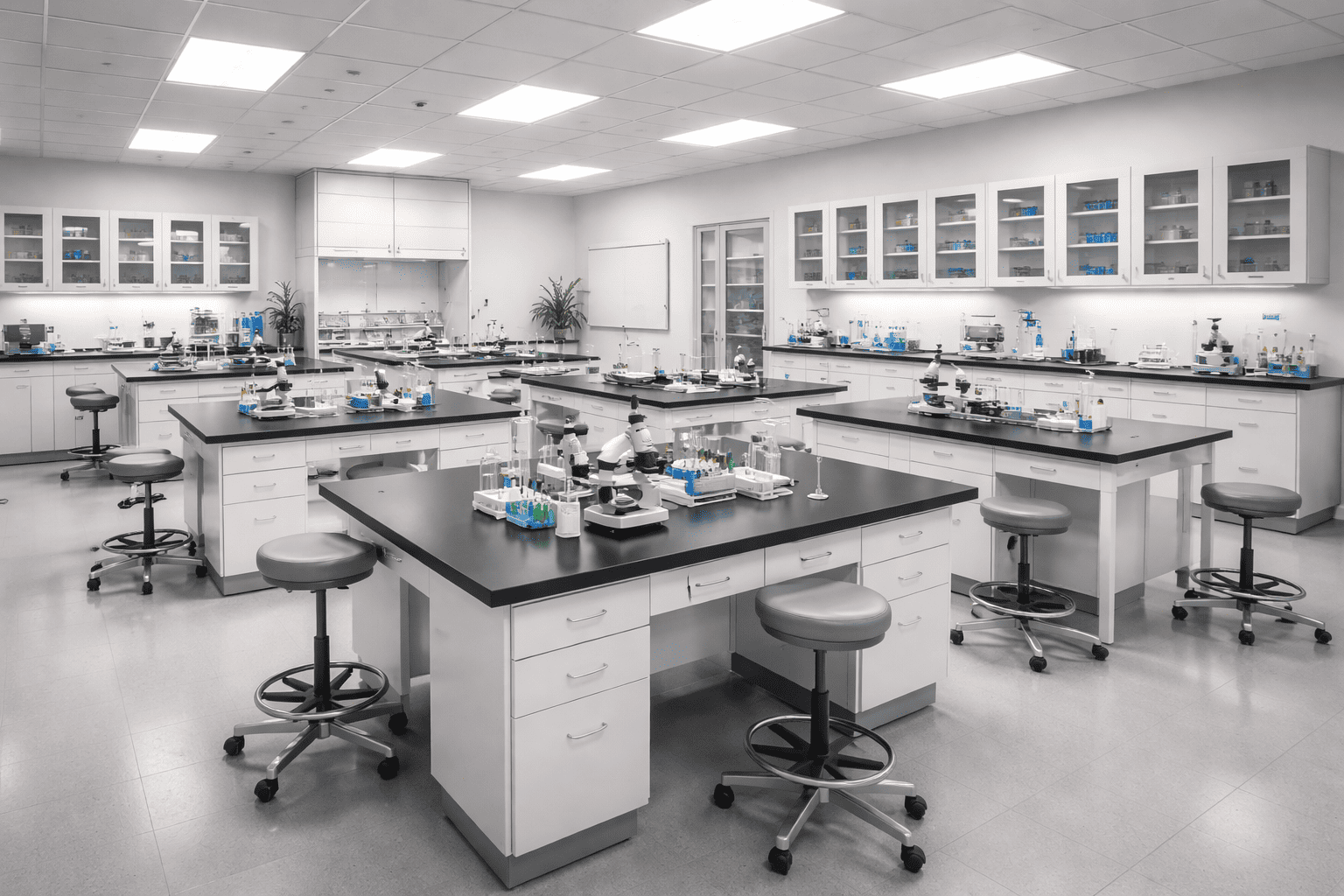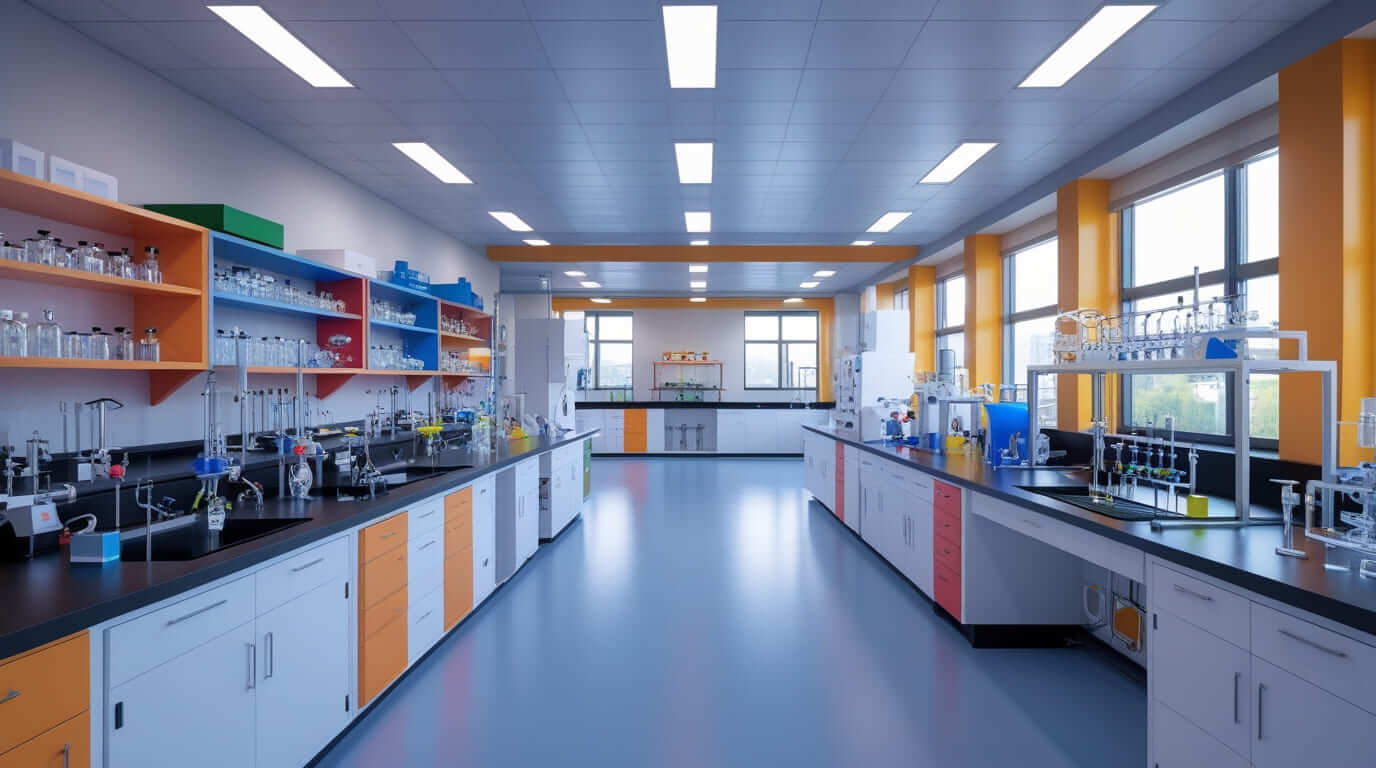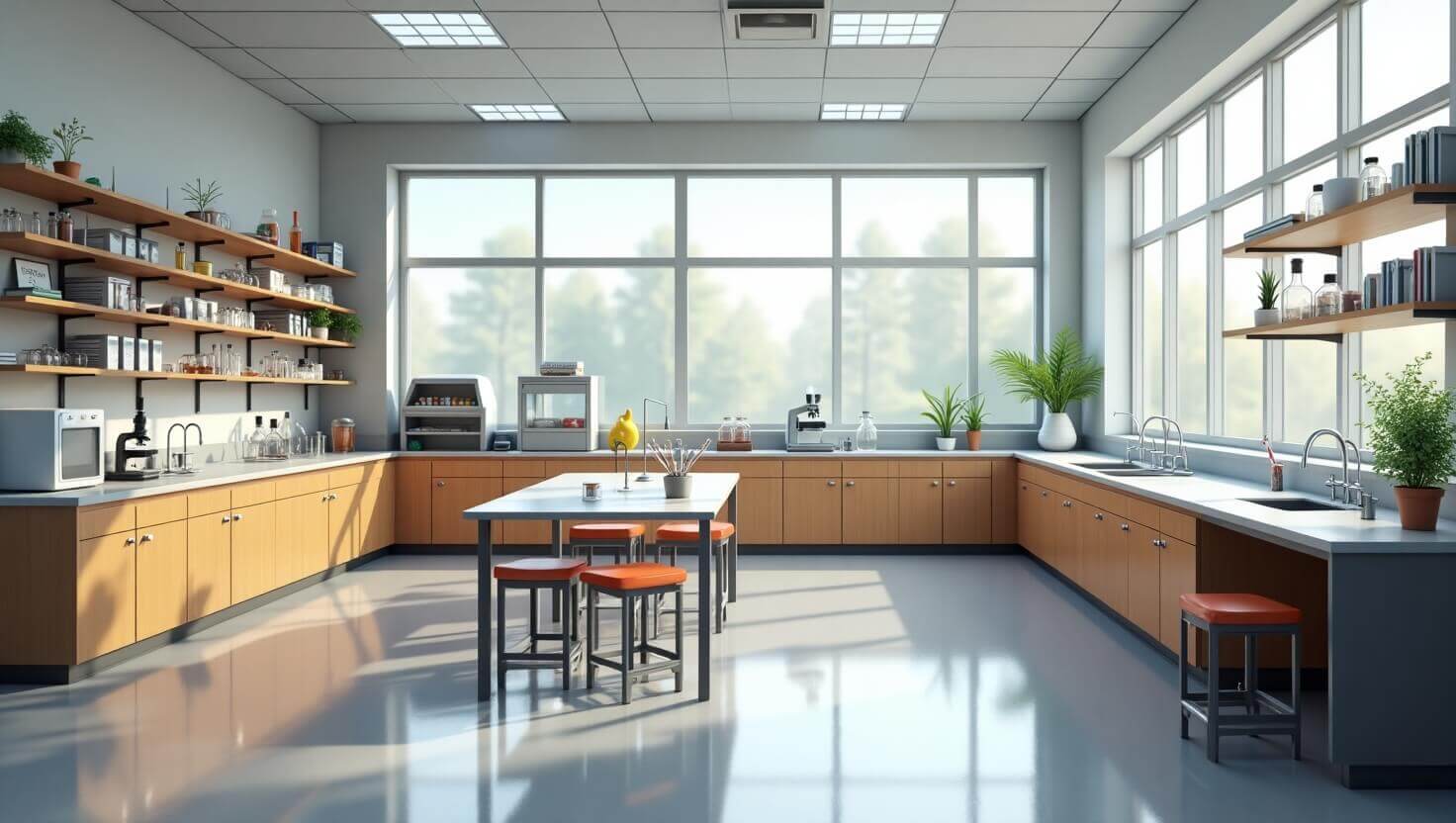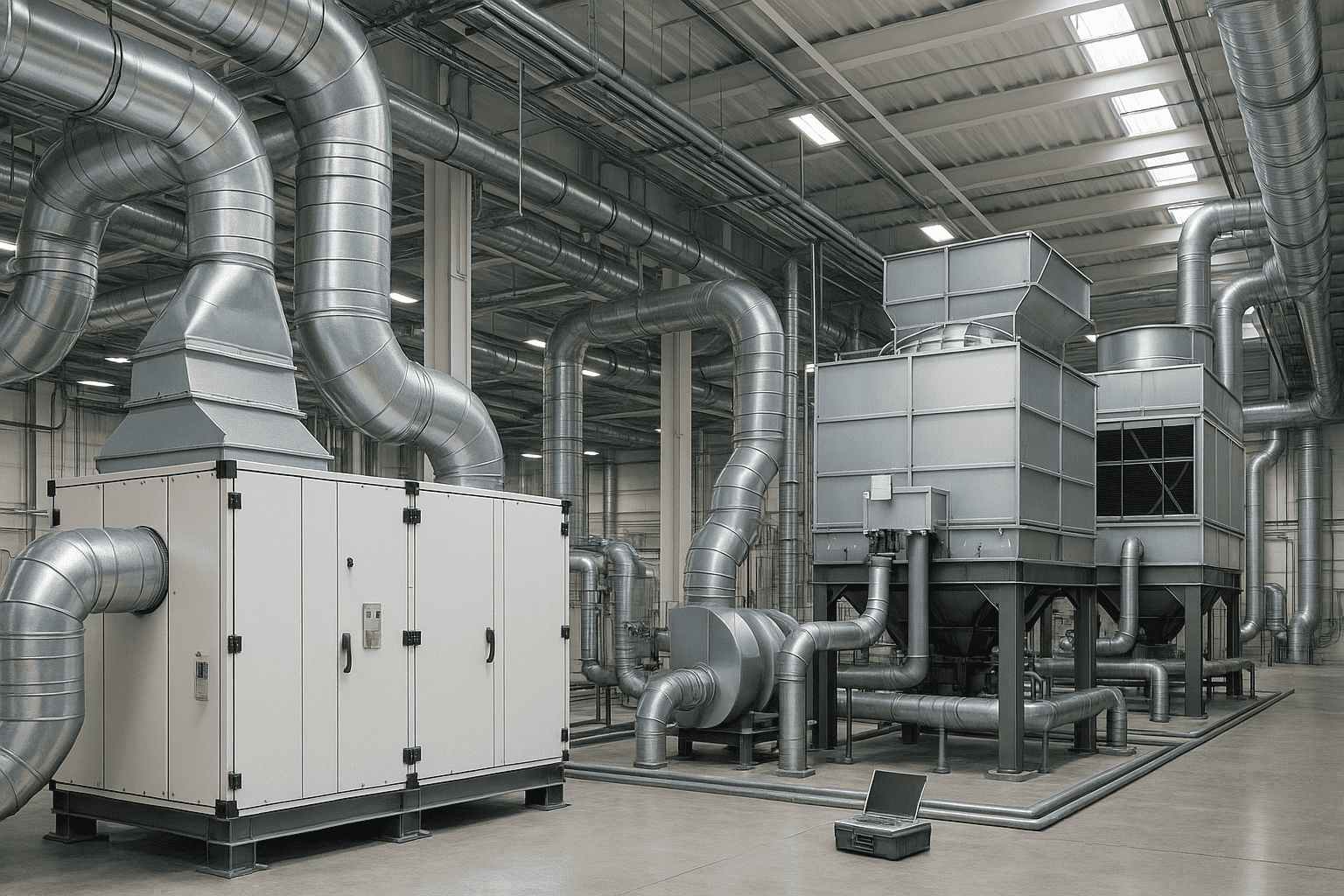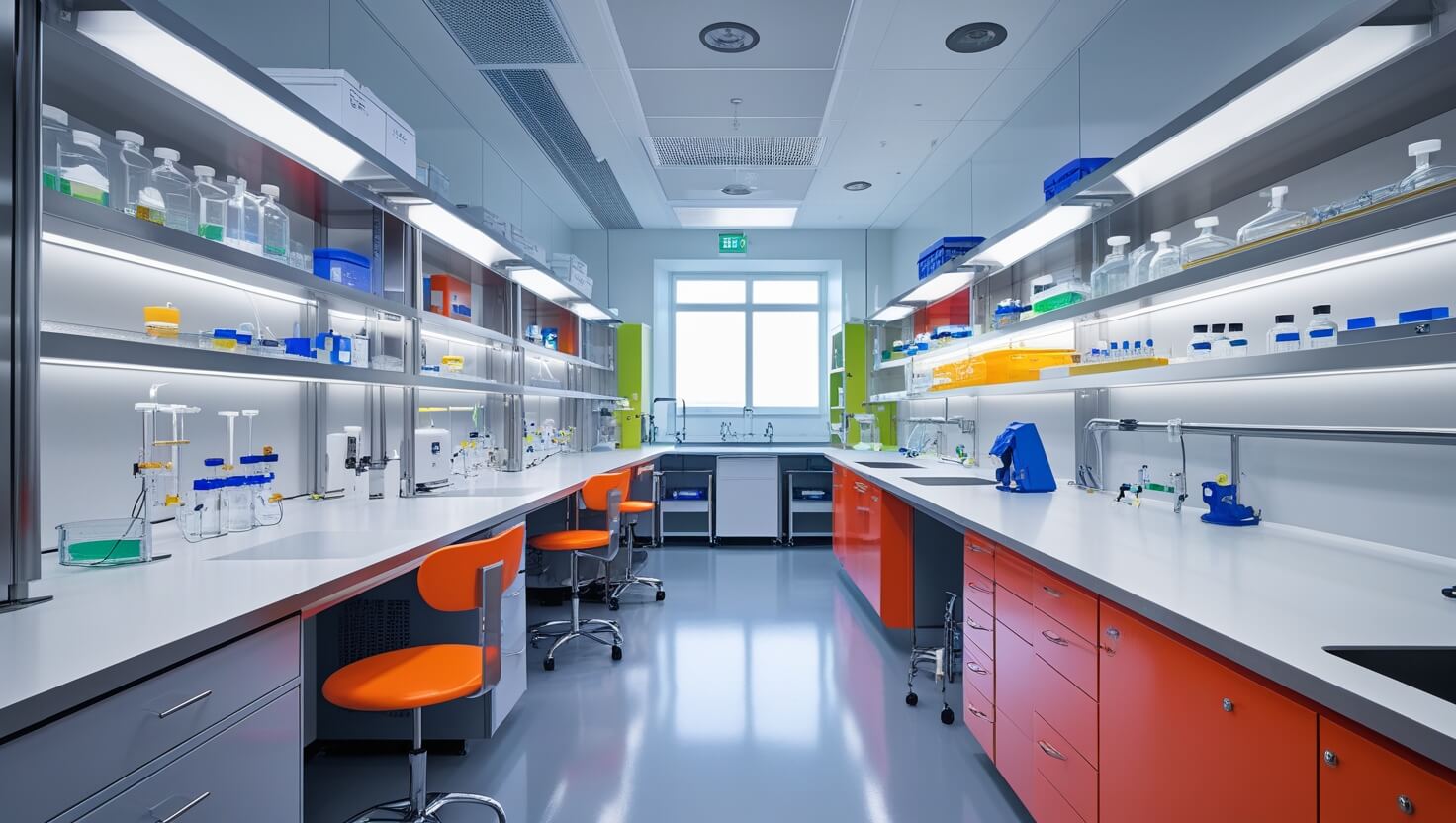
In any laboratory setting, whether for educational, industrial, pharmaceutical, or research purposes, the design and materials used in workstations play a crucial role in ensuring safety, functionality, and longevity. Laboratory environments demand specialized furniture that can withstand rigorous use, exposure to chemicals, fluctuating temperatures, and potential mechanical impacts. The best materials for laboratory workstations are chosen based on these requirements and the specific application of the lab.
This article explores the most commonly recommended materials for laboratory workstations, outlining their benefits, limitations, and suitable applications. Lab managers, designers, and engineers can make informed decisions to create efficient and safe lab environments by understanding these materials.
Which Materials Are Ideal for Lab Workstations?
1- Phenolic Resin
Phenolic resin is one of the most popular materials used in lab work surfaces due to its high resistance to chemicals, moisture, and bacteria. Created by layering Kraft paper with phenolic resin and subjecting it to high pressure and heat, this material is non-porous, which makes it ideal for environments that require frequent sanitization.
Key Benefits:
- Excellent resistance to acids, solvents, and other harsh chemicals
- Non-conductive and resistant to moisture
- Lightweight yet durable
Ideal For:
- Educational and general-purpose labs
- Healthcare labs where hygiene is a priority
- Labs with limited heavy mechanical work
2- Epoxy Resin
Epoxy resin countertops are a classic choice in laboratories for their durability and chemical resistance. Unlike phenolic resin, epoxy is cast into shape and cured, making it a solid, seamless surface with strong structural integrity.
Key Benefits:
- High resistance to heat (up to 350°F)
- Durable and can withstand heavy equipment
- Excellent resistance to acids and bases
Ideal For:
- Research labs with high thermal requirements
- Pharmaceutical and chemical laboratories
- Labs with heavy mechanical operations
Epoxy resin is a premium material and may come at a higher cost, but its lifespan and performance justify the investment for many lab environments.
3- Stainless Steel
In environments where cleanliness and corrosion resistance are crucial, stainless steel is often the go-to material. It is widely used in microbiology, medical, and food laboratories where sterility is a top concern.
Key Benefits:
- Resistant to corrosion, especially from water and moisture
- Easy to clean and sterilize
- Non-porous and hygienic
Ideal For:
- Biological and clinical labs
- Food and beverage testing labs
- Labs requiring frequent sterilization
However, stainless steel surfaces can be prone to scratching and may not handle some strong acids as well as epoxy or phenolic resins.

4- High-Pressure Laminate (HPL)
High-pressure laminate is a cost-effective solution for laboratories that don’t work with aggressive chemicals or high temperatures. It is constructed by layering decorative paper on a resin base and pressing it under high heat.
Key Benefits:
- Economical and visually appealing
- Resistant to moderate chemicals and stains
- Lightweight and easy to install
Ideal For:
- Educational labs and dry workspaces
- Computer or instrumentation labs
- Low-risk environments
While not suitable for heavy-duty chemical or heat exposure, HPL is a versatile choice for general-purpose applications.
5- Polypropylene
Polypropylene is a specialized plastic used in labs with aggressive acids, including nitric and sulfuric acid, where even stainless steel and epoxy might degrade.
Key Benefits:
- Highly resistant to corrosive chemicals
- Durable and impact-resistant
- Non-reactive with most acids and solvents
Ideal For:
- Acid digestion labs
- Chemical processing stations
- Labs handling highly reactive materials
Due to its niche application and high cost, polypropylene is generally used in specific lab areas rather than for general workstations.
Choosing the Right Material for Your Laboratory
Selecting the right material depends largely on the type of work performed in the lab, the chemicals used, the temperature range, and the frequency of cleaning and maintenance. Here are a few considerations to keep in mind:
- Chemical Resistance: Always match the surface material with the types of chemicals commonly used.
- Heat Resistance: Labs involving Bunsen burners or heating elements should opt for heat-tolerant surfaces like epoxy resin.
- Budget and Maintenance: While high-performance materials are ideal, some environments can balance cost and functionality with options like HPL or phenolic resin.
Conclusion
Investing in the right materials for laboratory workstations is essential for ensuring operational efficiency, user safety, and longevity of the workspace. Materials like epoxy resin, stainless steel, and phenolic resin offer excellent properties suited to diverse lab environments. Evaluating the specific needs of your laboratory—whether that includes high chemical resistance, heat durability, or hygiene—will help in selecting the most appropriate materials.
In the long run, the right workstation materials not only enhance performance but also reduce maintenance costs, prevent accidents, and support compliance with health and safety standards. When planning or upgrading a lab space, consulting with lab furniture specialists or manufacturers can also help tailor solutions that meet technical and regulatory demands.

